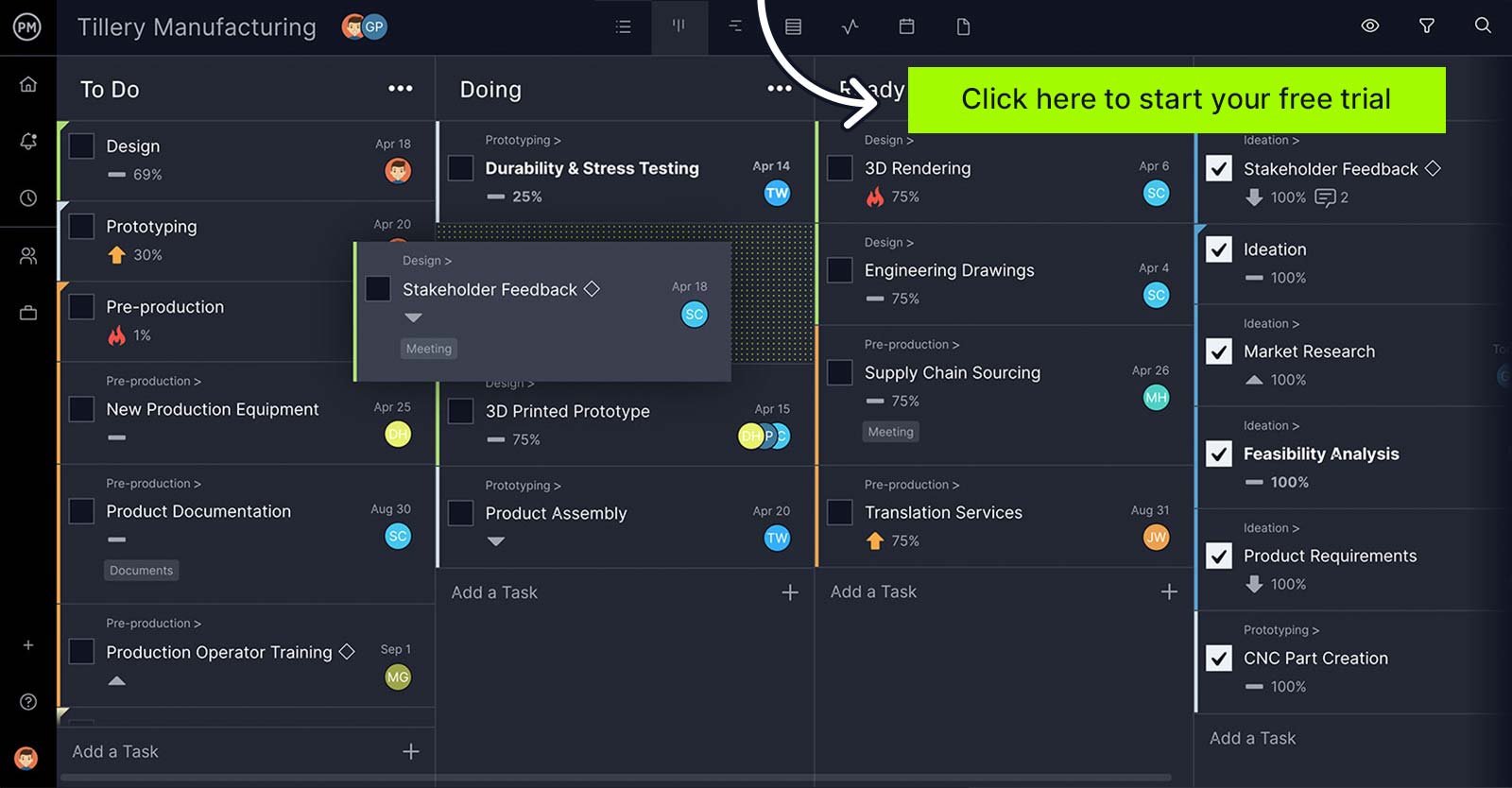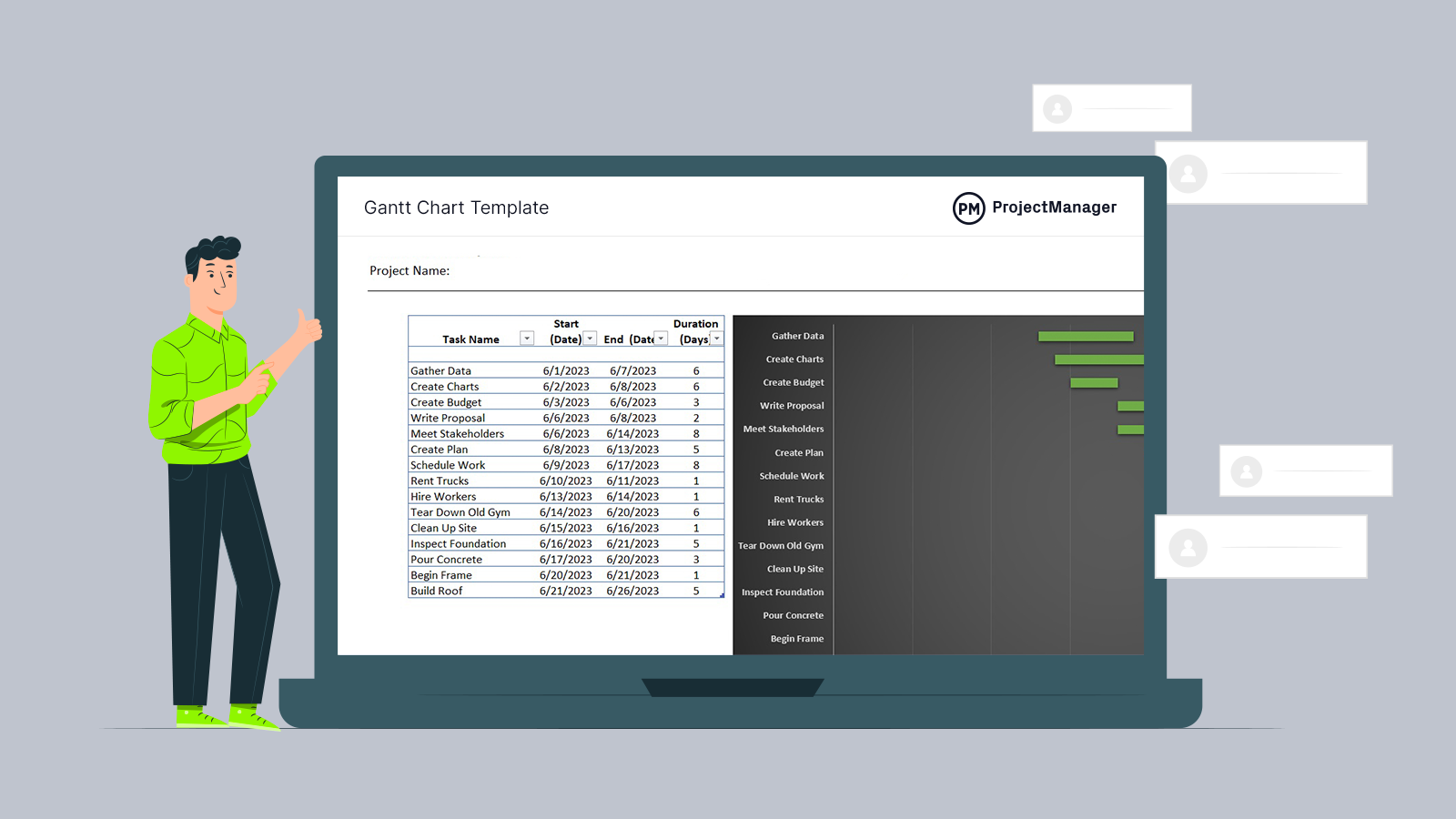Every project is different, of course, but the differences when managing software development projects are especially so, due to its distinct life-cycle processes.
What Is Software Project Management?
Software project management is the planning, managing and tracking of software development projects. While the deliverable might differ from other projects that produce tangible deliverables, the processes are basically the same as the management of any other type of project. There’s the schedule, resource allocation and execution, managing of teams and stakeholders and so forth.
However, what makes software development projects unique is that they involve the traditional project management life cycle as well as the software development life cycle (SDLC). Both of these overlapping processes must be managed for successful software development.
Just as in any project, project management software adds efficiencies to all these processes. ProjectManager is award-winning project management software that has kanban boards to visualize workflow across the production cycle. Scrum teams can manage their backlog and collaborate when planning sprints. Product owners get visibility into the process and can identify and resolve roadblocks before they impact the project. Get started with ProjectManager today for free.

Examples of Software Projects
Software and web projects can run the gamut. There are many examples of when software project management is used. Here are just a few examples.
- Developing a mobile application
- Creating a new software
- Adding new features, patch fixes and new version releases to an existing software
- Changing the UX of a software
The Project Management Life Cycle
As noted above, software project management differs from other types of project management in its deliverables. The phases of the project life cycle are the same. As with any project, there are five phases, which are explained below.
Initiation
This is when it is decided whether the project is worth the investment. The project charter is written and a project initiation document is also created. The stakeholders will then determine whether the project is viable or not.
Planning
If the project is approved, it moves into the planning stage. Here the project scope is defined and a budget is created. A work breakdown structure is used to identify the deliverables. Managers will schedule tasks on a Gantt chart and build a communication and risk management plan, among other things.
Execution
The work now begins on creating the deliverables. Managers will track progress and performance as well as deliver status reports to stakeholders to keep them updated on progress by measuring key performance indicators (KPIs). Quality is checked throughout and forecasts as to the completion are made.
Monitoring and Control
This phase happens at the same time as the execution phase. Managers ensure that deliverables are meeting quality standards, they also track the progress and costs to make sure they’re keeping to the project plan.
Closing
Once the final deliverables are produced, the project manager will release the team, finalize paperwork and conduct a post-mortem to learn from mistakes so they aren’t repeated in the future.
The Software Development Life Cycle
While project phases are relatively the same, the software development life cycle is unique to software development projects. In this process, there are six phases instead of five. Let’s take a look at these six phases of software development.
Plan
Planning involves gathering the team of developers, project managers, clients, et al., and identifying the need or problem that the project is going to address. Then analyze the data to determine objectives, creating a timeline and budget.
Design
Designers and developers determine how the front end and back end of the software will look and work. Then they will figure out how to build it.
Implement
As in the execution phase above, this is when the team starts building. Often referred to as development, it’s when the coding and setting up of the system’s infrastructure begins.
Test
When something is completed by the developers, testing begins. Testers use documentation created during planning and design to test the deliverable. They also follow paths expected for users to take.
Deploy
Once completed, the software is released into the world. Everyone on the team should be ready to respond to any bugs that occur.
Maintain
Software development never truly ends, as software is constantly improved. That’s why maintenance is part of the process to ensure that it continues to work as designed.
Software Project Management Methodologies
There are many project management methodologies that can be used when developing software. While many traditional projects use the structured waterfall approach, software projects tend for more iterative working environments. Here are some.
Agile Project Management
Agile project management is used by teams in software development to allow them to work quickly and collaboratively. It is open to change and can pivot widely depending on changing requirements. Work is done in sprints, which are usually no more than two weeks on a single set of user stories.
Scrum
Scrum is a management framework that’s done in an agile environment. It uses self-organizing teams that work together towards a common goal. Scrum teams meet daily with the product owner and plan sprints to work quickly and adaptively.
Extreme Programming
Another agile project management methodology, extreme programming works towards speed and simplicity within short development cycles. Like scrum, its work is done in sprints and embraces an iterative process.
Software Project Management Tools
There are many different types of project management tools that can be employed in software project management by managers and their teams. Here are some of the most common.
Gantt Charts
While Gantt charts are mostly used in structured projects managed by a waterfall methodology, they can be employed in software development, especially if some teams or management aren’t working in an agile environment. Gantt charts break projects into phases and show all the tasks of a project in one visual timeline.

Get your free
Gantt Chart Template
Use this free Gantt Chart Template for Excel to manage your projects better.
Project Dashboards
Project dashboards are used to monitor project progress and performance. They track various KPIs that are displayed in charts and graphs. Some project management software will require users to set up dashboards while others are already configured and don’t need to be set up.
Kanban Boards
Kanban boards are a popular tool for teams planning sprints. They break the production cycle into columns on a board with tasks represented by what’s called a kanban card. These cards have all the directions on them and teams move the card from one column to another as they complete their work. This provides managers will visibility into their work.
Project Calendars
A project calendar shows the tasks on a calendar grid. It provides an overview of the whole project, especially when milestones are due. Project calendars are a tool often used by stakeholders who want to track progress but aren’t interested in the more detailed tools.
Task Lists
A task list is just that, a line of tasks. Depending on the software, these tasks can have detailed directions, tags to make it easier to find them, priority and more.
What Makes Software Project Management Unique?
In the video below, Jennifer Bridges, project management professional (PMP) explains what makes software development projects unique from other types of projects.
Jennifer outlined four areas to focus on when thinking of software project management, that is running web or software development projects. These are points in your planning that should receive extra attention as they’ll inevitably vary from the normal course you’re used to working with. They are as follows:
When managing a software project, if you give extra-special attention to these areas it’s less likely that you’ll find yourself unprepared when changes happen, and changes always happen. That’s the fun of being a project manager!
Take it further: Software developer and writer for Tech Republic, Justin James, provides further insight with his article 10 classic mistakes that plague software development projects.
Thanks for watching!

